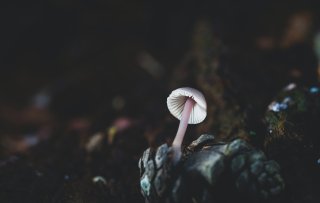Duskie Estes is a woman on a mission. With her nonprofit organization, Farm to Pantry, she saves numerous kilograms of fresh vegetables and fruits from waste every day, along with a team of 500 volunteers. This process is called "gleaning." The harvest is used to help feed the local community, and reaches marginalized families and individuals in need of care. In this way, Estes combats both food waste and food insecurity. During our spring visit to California, Food Inspiration joined Duskie and her team for a morning of gleaning.
We are standing outside the door of a detached house in the middle of a residential area in Healdsburg. Two enormous fruit trees filled with juicy oranges stand on the side of the house. We're here to glean with Duskie Estes, the founder of Farm to Pantry. Gleaning means collecting bit by bit. Estes explains, "We harvest surplus vegetables and fruits from backyards, orchards, and farms, and use them to feed our community. We distribute the fresh produce to those who need it the most. The three charity organizations benefiting from today's harvest are a Healdsburg food bank, a local hospital, and the Healdsburg Senior Center."
Estes' work area covers Sonoma County. She has a team of 500 volunteers and harvests from over 300 farms, orchards, and backyards. It doesn't matter if it's a single orange tree in someone's backyard or 12,000 Meyer lemon trees in a commercial orchard. Anyone with surplus food can indicate it on the website, after which Duskie’s team will do the matchmaking, schedule an appointment and send over a team to collect it. The yield is shared with more than 100 community partners and charitable organizations, including local food banks, food pantries, low-income housing, and health clinics.
Because of California’s abundant sunshine, particularly in this part of the “Golden State,” almost every house here has one or more fruit trees in the backyard. Unfortunately, up to 90% of the average fruit or nut tree's yield goes to waste, Estes explains as she unloads her materials: buckets, boxes, and special rakes for pulling and catching the fruit from the trees. "The fruit rots on the tree or falls to the ground. It’s such a waste. And yet, these ripe crops are at their best: full of flavor and nutrients. We do everything we can to ensure they are eaten instead of ending up on the ground."
A glean always takes place in the morning and lasts about three hours. The number of volunteers called upon depends on the expected amount of trees or crops to harvest. The harvest that is picked in the morning is delivered to one or more of the charities that same day, so it's super fresh. Estes says, "We glean 52 weeks a year. We're nearing the end of the citrus season, so we're currently harvesting lemons and oranges, as well as grapefruits, pomelos, and bergamots. At other times of the year, it might be strawberries or fresh vegetables like broccoli, cauliflower, Swiss chard, or spinach."
Estes emphasizes why it's so important to reduce waste: "One in five residents in our community experiences food insecurity; nationwide, that statistic is one in six. In recent years, we've also had many wildfires here, causing harvests to be lost. Climate change is real, and food insecurity will continue to grow. As a society, we can't afford to let all these fresh crops go to waste. Everyone needs to contribute, and this is my way."
Sonoma County produces an incredible amount of vegetables, fruits, and many award-winning wines. "Our crops feed a large part of the country. We are a community of farmworkers. It's tragic that many of our own farmworkers can't afford the products they grow. What we do is bridge the gap between where the fresh food is and where it's needed."
 Written by
Written by 











